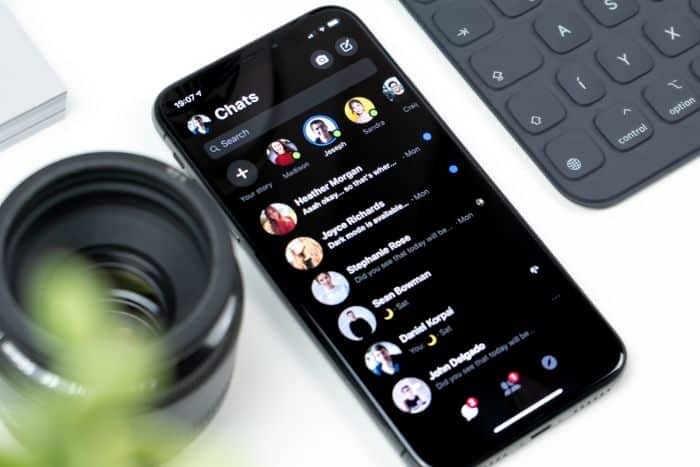You want to create a hybrid mobile App? When you decide to develop an application, the first question that will arise is the programming language to be used. If you want to create an application compatible with iOS or Android, you will have to choose between different types, namely “native”, “hybrid” or “cross-platform”.
The native application is designed to work only on the desired operating system. Thus, a native Android application will not be compatible with the iOS system. To be able to reach a maximum of people, applications turn to the other two solutions. But what is really a hybrid application?
What is a hybrid mobile App?

The hybrid mobile App is none other than an application that has a source code compatible with Android, iOS or even Windows Phone. Nowadays, most applications that are developed are native. Thus, there are two codes when you can find the application on both Android and iOS.
However, this trend will change with new technologies that make it easier to make the application hybrid. A single source code is twice less work, and only one code to modify during updates and various changes. A solution that greatly facilitates the task and saves time and money.
Why create a hybrid application?
The hybrid application allows you to develop only one application to be compatible with iOS and Android simultaneously. It is therefore not necessary to call a developer twice, but only once. This optimizes the design costs and avoids having to take into account the constraints that are linked with each system.
A hybrid application can be created for all sorts of reasons. Let’s take the example of developing a mobile game. If you want to be able to reach as many people as possible, it’s important not to neglect iOS users.
With a native application, you’ll need to develop the game twice with different programming languages which will take you twice as long. You will also need to make code changes and test the update on both applications when upgrading, which makes it even more complex.
The hybrid application is also very useful for many other applications. A dating app for example cannot afford to leave out almost 10% of the world’s population by not making its solution compatible with iOS. The same goes for sports apps, entertainment apps and any other solution.
By choosing a hybrid application, you make sure to centralize your source code in one place, which reduces errors and allows you to offer a better quality solution by spending more time on its improvement than on its development.
Pros and cons of a hybrid application
The first advantage that is put forward in the development of a hybrid application remains the cost of the application. Indeed, hybrid technologies only need one source code that allows to publish two applications. The work that needs to be done is therefore half the amount of work compared to native applications.
As far as updates and maintenance are concerned, here again the costs are optimized since only one code is needed, not two.
The second big advantage of the hybrid mobile App is its speed of development and deployment on different platforms. Both applications are developed simultaneously from the same source code, so there is no lag between the release on Android and iOS. In addition, the timeframe is reduced by reducing the amount of work. In short, the hybrid mobile App is an application that is easier to deploy and easier to develop.
On the downside, it is important to know that the vast majority of limitations related to hybrid solutions have been solved thanks to cross-platforming, which allows to go even further. However, there are still special cases for which the development of several applications remains a better solution.
A common limitation concerns the user interfaces that are pushed. Indeed, some displays that are complex can be difficult to implement in a hybrid solution. This is because of the differences in appearance that can exist between an iOS menu and an Android menu. Today’s frameworks offer very good adaptations for simple and advanced developments. But when the complexity is pushed further, they start to show their limits which can be a problem for this kind of development.
Another point that often comes up is the stability of the code. A hybrid code is logically less stable than a native code, because it is not specifically designed for the operating system. It is therefore necessary to prefer a native mobile App in order to avoid various bugs and compatibility problems. Many plug-ins and features related to the phone are pieces of code that are made available to developers.
The use of these various features can therefore quickly lead to a dependency on these communities, which do not always publish updated plug-ins in time. With the evolution of the operating system, the application can thus quickly become obsolete or malfunction, which can strongly harm its popularity. A problem that is not encountered in the case of native application development.
Hybrid development technologies

Before you start or call a freelance or an agency for the development of your hybrid application, it is wise to ask the right questions in order to be sure of what the professional means by hybrid.
To help you see things more clearly, we have compiled a list of the different technologies that can be used. This will give you an overview and give you your own idea of the type of rendering that is possible.
This is how we find ported web applications and PWAs. The so-called “HTML5” applications, which do not mention any other name, are simply websites that are directly ported to a mobile version.
This solution is the easiest to implement, but it is also by far the most limited. It is therefore only suitable for simple applications that do not seek to integrate original features. A showcase application or an application to publish blog posts can easily be set up with this solution.
Then there are the hybrid development technologies. Your freelancer or the agency in charge of your project should therefore tell you about Ionic, Apache Cordova and PhoneGap. It is important to know that these three technologies are all related.
Apache Cordova is a so-called open source project that will serve as a basis for development on different platforms. The technology is based more on web technologies such as HTML5, Javascript and CSS than on native code itself.
As for PhoneGap, it is simply a version of Cordova that is maintained and produced entirely by the giant Adobe.
Finally, Ionic Framework is a set of CSS classes but also libraries and many JavaScript modules that rely on AngularJS to enrich Cordova with many features.
Our tip for creating a hybrid application
To create a hybrid application that meets your expectations, no doubt you will need strong mobile App development skills. Unfortunately, the people who carry out this type of project do not always have the skills to do so, which hinders the development of the project.
It is then necessary to call upon a professional who has the skills to carry out this type of development. Less expensive and more flexible, freelancers have a definite advantage over development agencies, but they are not always reliable.
Some platforms allow you to choose among the different proposals with their price, their delivery time and their vision of application development. You get dozens of quotes quickly to complete your project from qualified professionals whose opinions you can check while benefiting from the supervision of the platforms for maximum security.